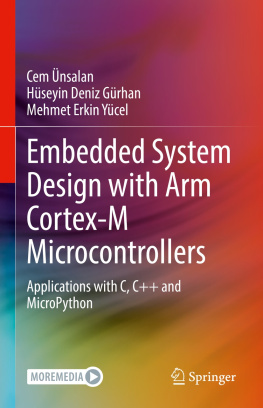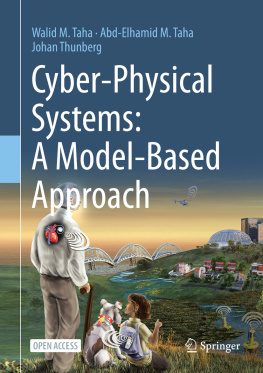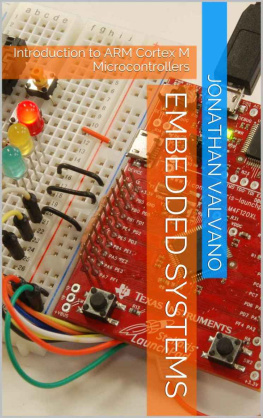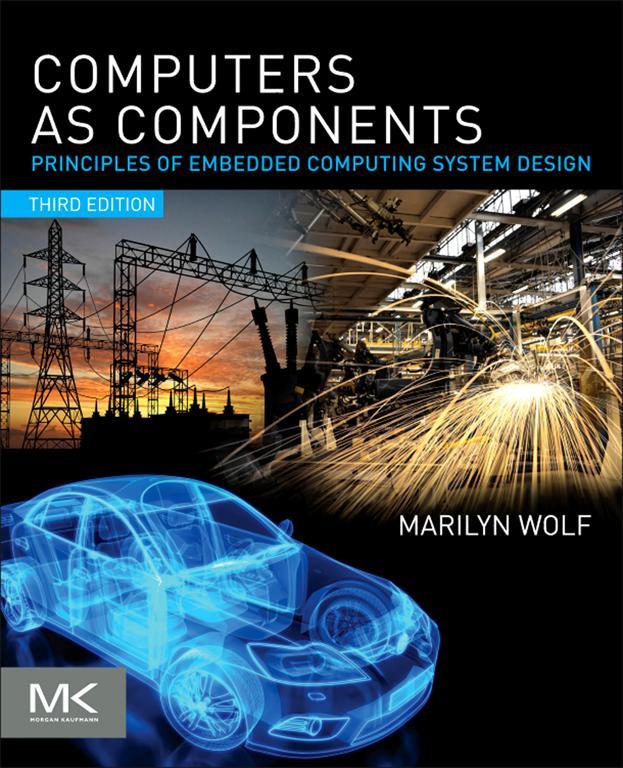Marilyn Wolf - Computers as Components, Third Edition: Principles of Embedded Computing System Design
Here you can read online Marilyn Wolf - Computers as Components, Third Edition: Principles of Embedded Computing System Design full text of the book (entire story) in english for free. Download pdf and epub, get meaning, cover and reviews about this ebook. year: 2012, publisher: Morgan Kaufmann, genre: Computer. Description of the work, (preface) as well as reviews are available. Best literature library LitArk.com created for fans of good reading and offers a wide selection of genres:
Romance novel
Science fiction
Adventure
Detective
Science
History
Home and family
Prose
Art
Politics
Computer
Non-fiction
Religion
Business
Children
Humor
Choose a favorite category and find really read worthwhile books. Enjoy immersion in the world of imagination, feel the emotions of the characters or learn something new for yourself, make an fascinating discovery.

- Book:Computers as Components, Third Edition: Principles of Embedded Computing System Design
- Author:
- Publisher:Morgan Kaufmann
- Genre:
- Year:2012
- Rating:5 / 5
- Favourites:Add to favourites
- Your mark:
Computers as Components, Third Edition: Principles of Embedded Computing System Design: summary, description and annotation
We offer to read an annotation, description, summary or preface (depends on what the author of the book "Computers as Components, Third Edition: Principles of Embedded Computing System Design" wrote himself). If you haven't found the necessary information about the book — write in the comments, we will try to find it.
Computers as Components: Principles of Embedded Computing System Design, 3e, presents essential knowledge on embedded systems technology and techniques. Updated for todays embedded systems design methods, this edition features new examples including digital signal processing, multimedia, and cyber-physical systems. Author Marilyn Wolf covers the latest processors from Texas Instruments, ARM, and Microchip Technology plus software, operating systems, networks, consumer devices, and more.
Like the previous editions, this textbook:
- Uses real processors to demonstrate both technology and techniques
- Shows readers how to apply principles to actual design practice
- Stresses necessary fundamentals that can be applied to evolving technologies and helps readers gain facility to design large, complex embedded systems
Updates in this edition include:
- Description of cyber-physical systems: physical systems with integrated computation to give new capabilities
- Exploration of the PIC and TI OMAP processors
- High-level representations of systems using signal flow graphs
- Enhanced material on interprocess communication and buffering in operating systems
- Design examples include an audio player, digital camera, cell phone, and more
Updates in this edition include:
- Description of cyber-physical systems: physical systems with integrated computation to give new capabilities
- Exploration of the PIC and TI OMAP multiprocessors
- High-level representations of systems using signal flow graphs
- Enhanced material on interprocess communication and buffering in operating systems
- Design examples include an audio player, digital camera, cell phone, and more
Marilyn Wolf: author's other books
Who wrote Computers as Components, Third Edition: Principles of Embedded Computing System Design? Find out the surname, the name of the author of the book and a list of all author's works by series.







